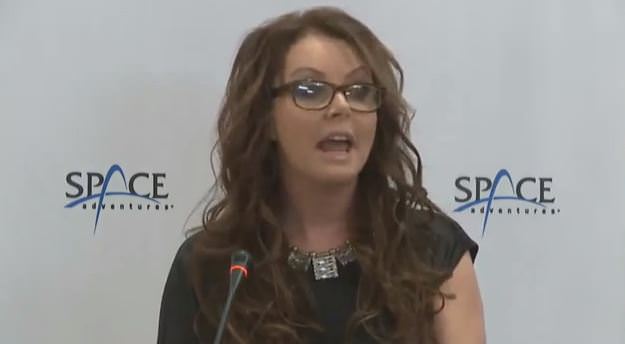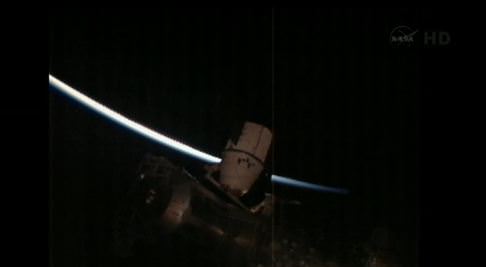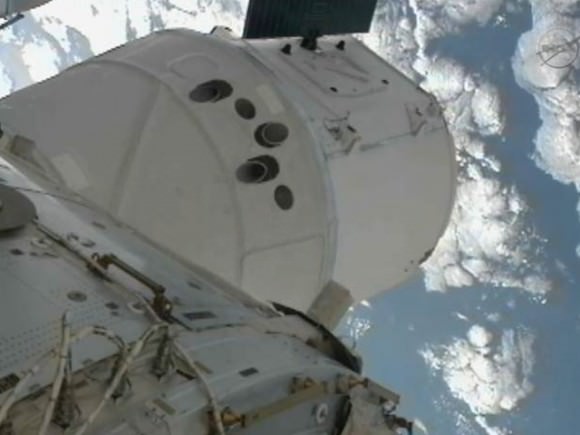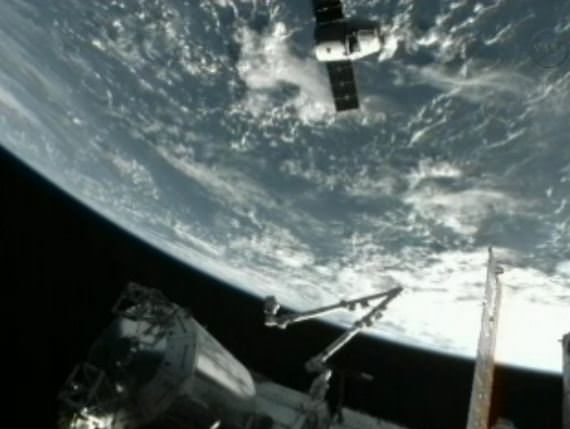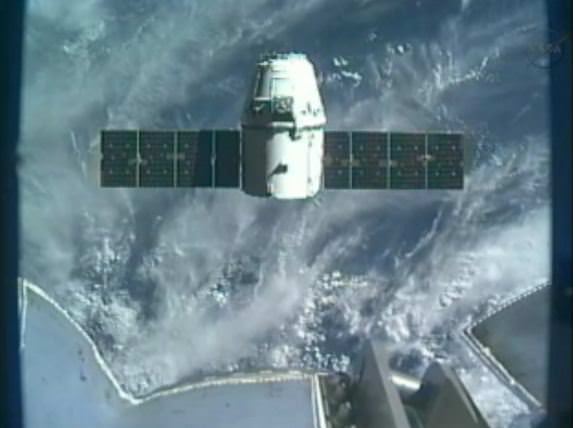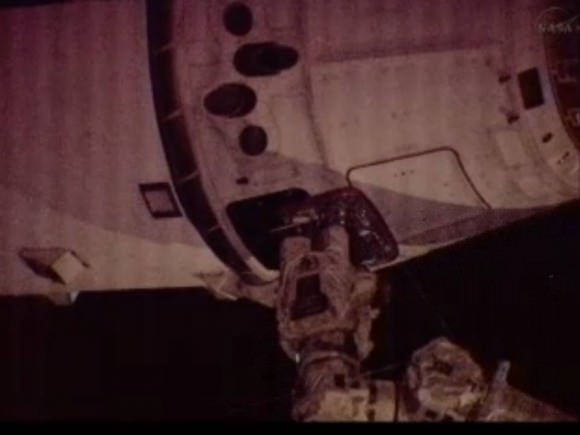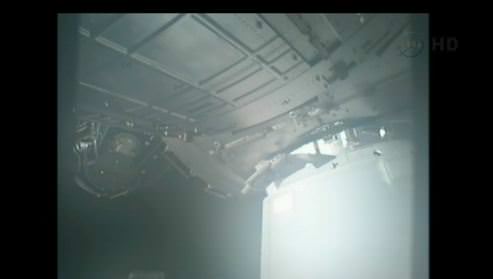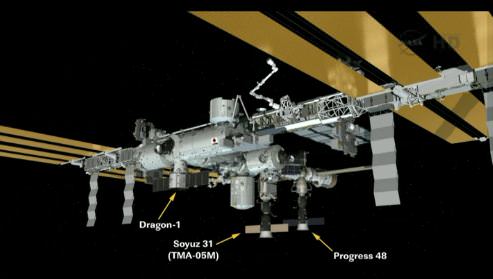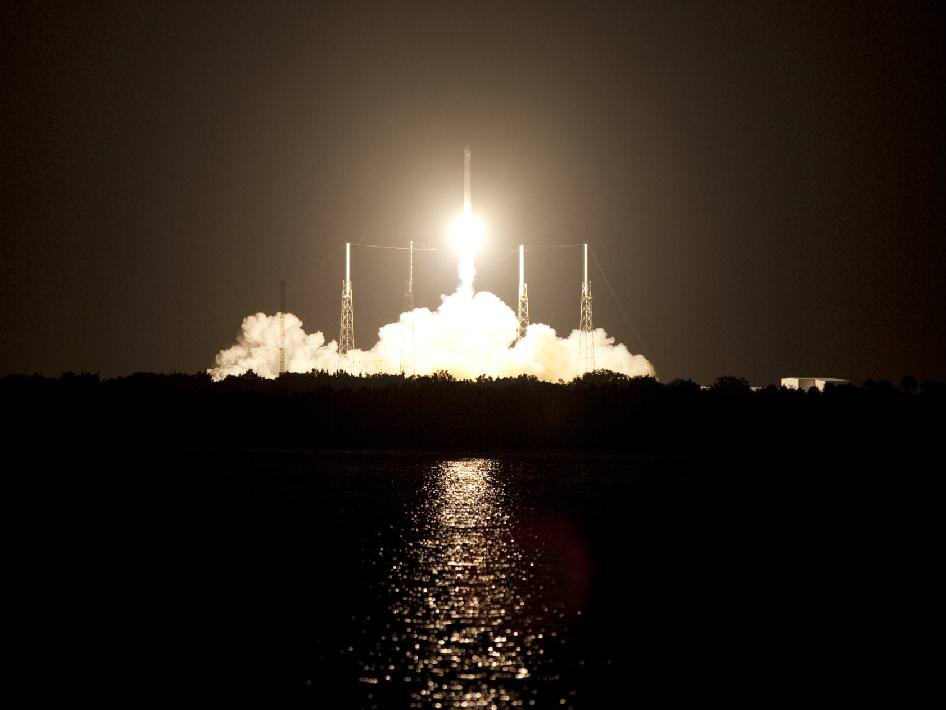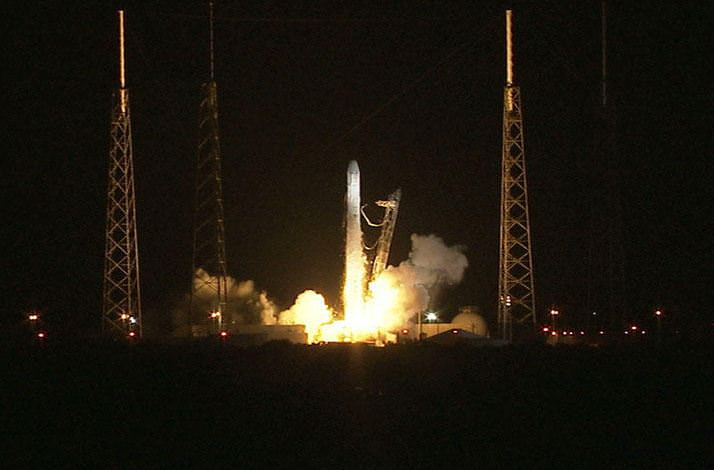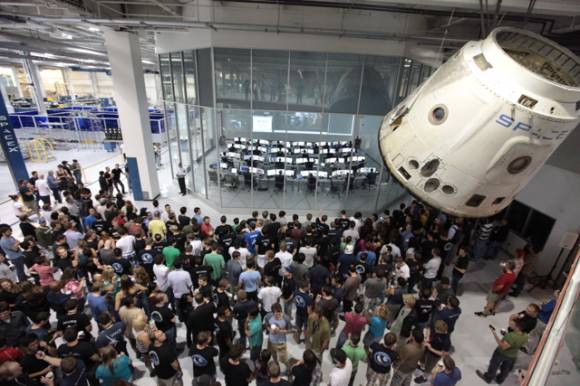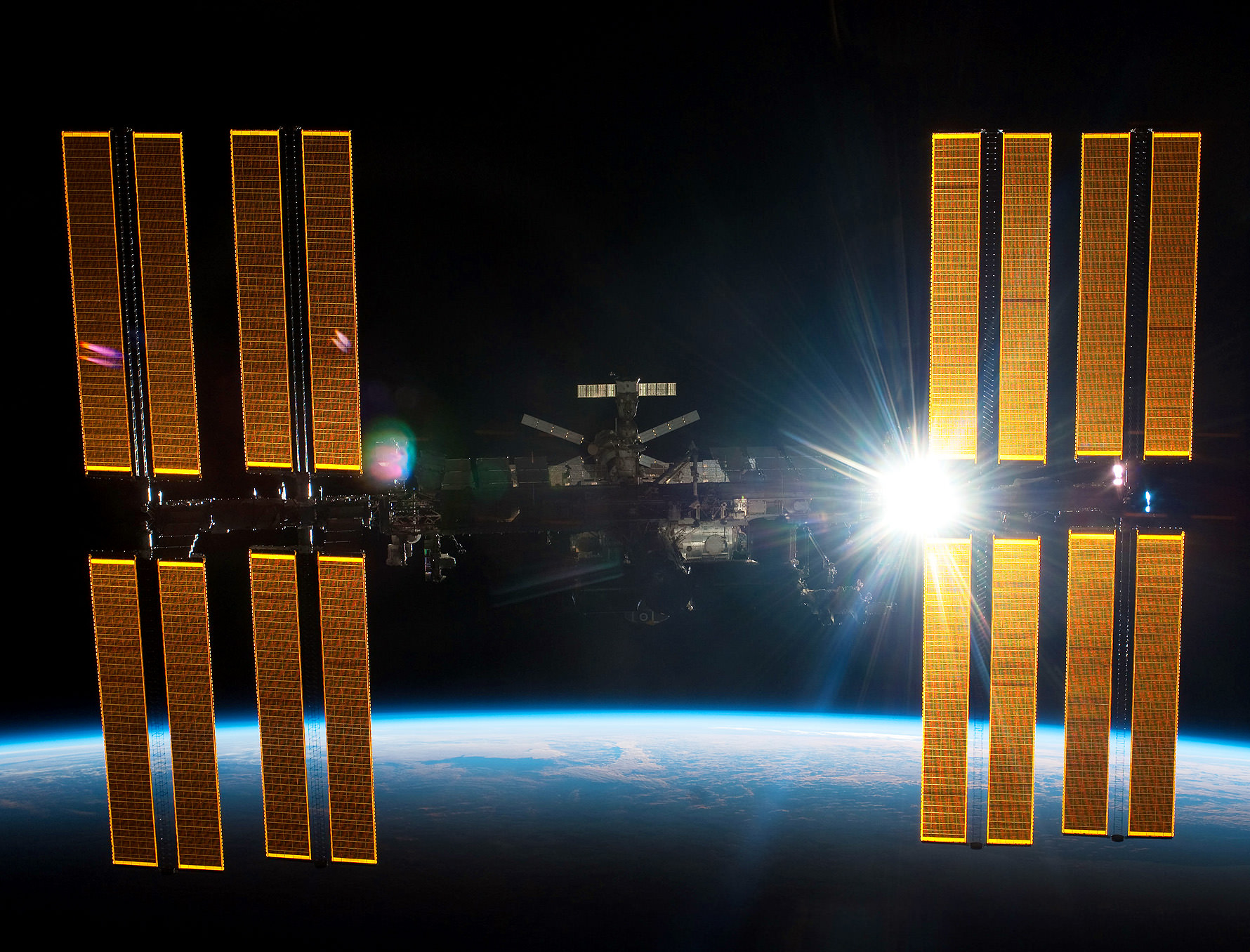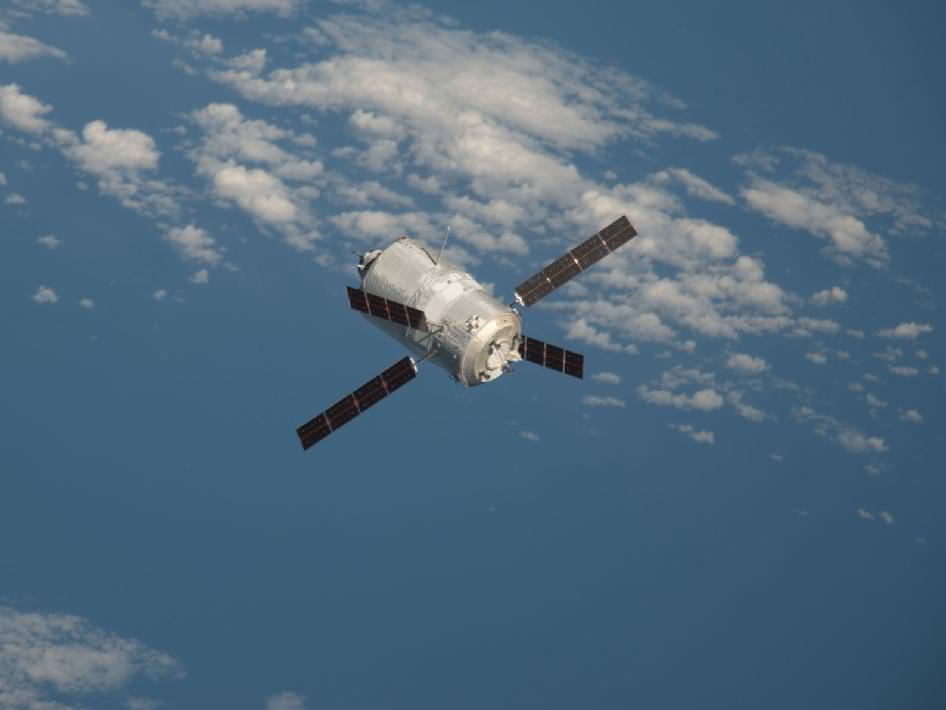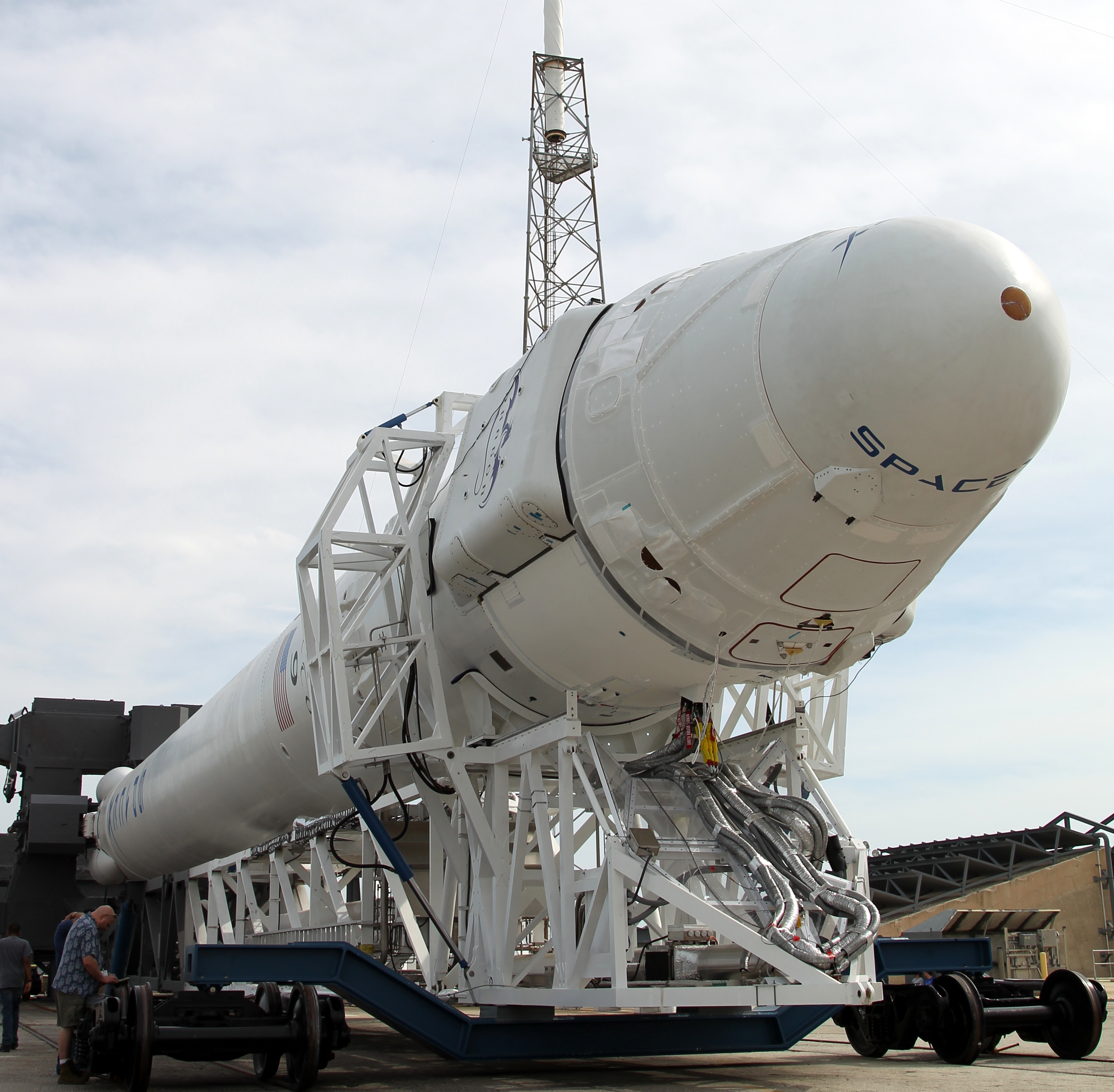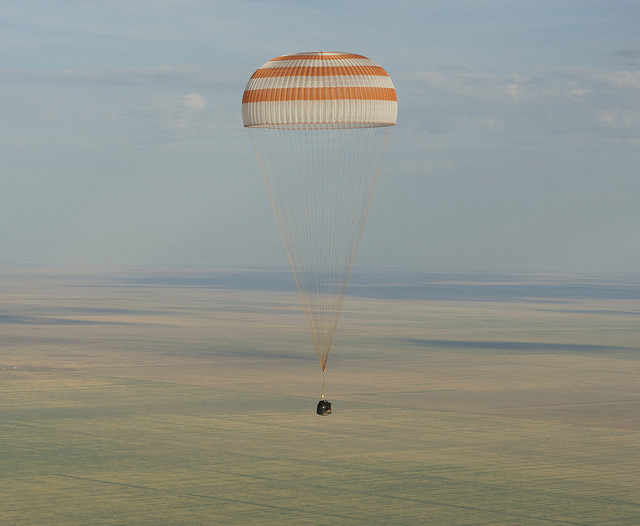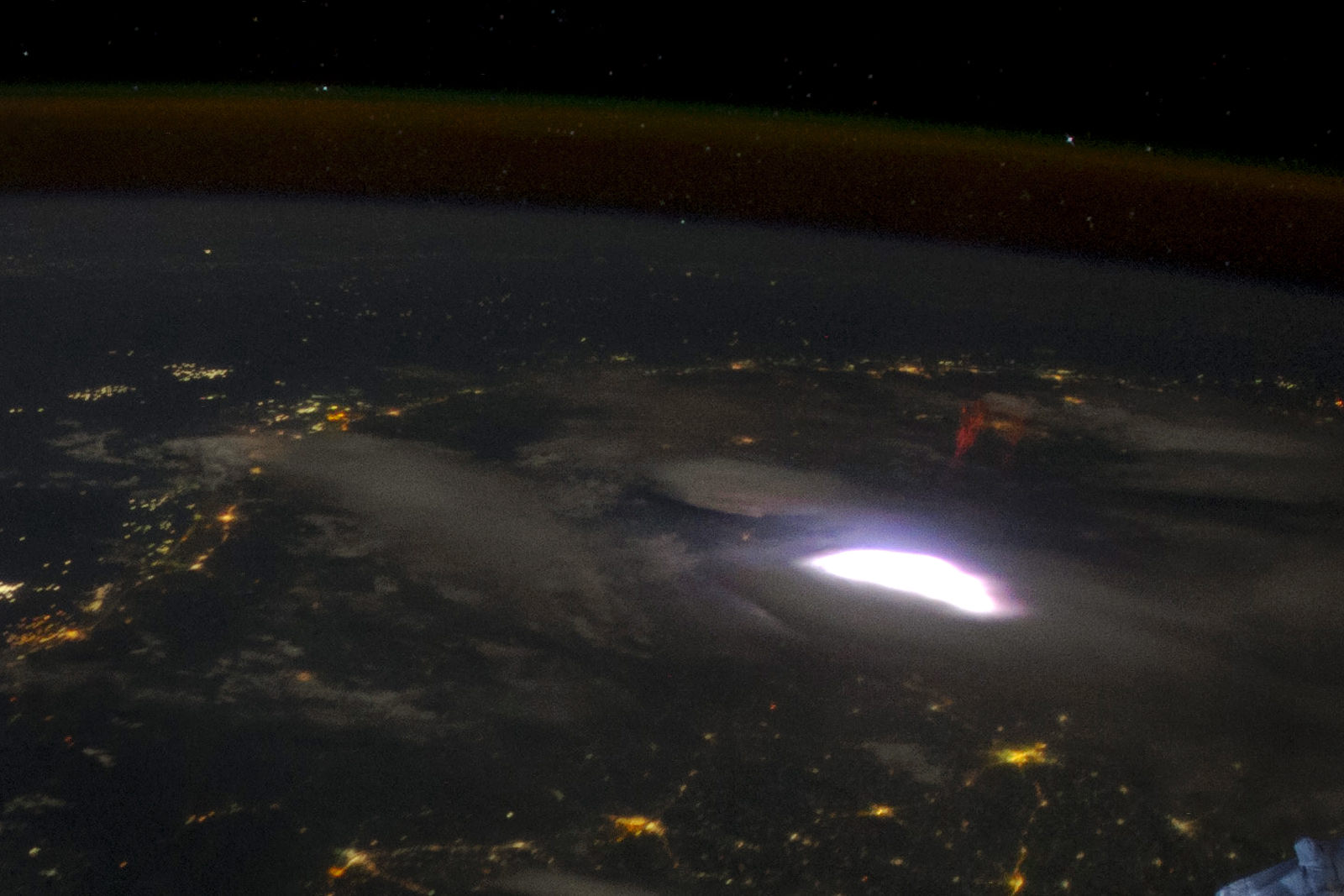Singer Sarah Brightman at a press conference on October 10 to announce her upcoming space flight.
Roscosmos and Space Adventures are re- starting space tourism flights, and the next space tourist will be singer Sarah Brightman, who will head to the International Space Station on a Soyuz rocket. Brightman, 52, announced her trip at a press conference in Moscow on Wednesday, saying that she hopes her trip — which will likely take place in 2015 — will be a catalyst for the hopes and dreams of people around the world.
“I don’t think of myself as a dreamer. Rather, I am a dream chaser,” said Sarah Brightman. “I hope that I can encourage others to take inspiration from my journey both to chase down their own dreams and to help fulfill the important UNESCO mandate to promote peace and sustainable development on Earth and from space. I am determined that this journey can reach out to be a force for good, a catalyst for some of the dreams and aims of others that resonate with me.”
Brightman is a UNESCO Artist for Peace Ambassador, and is a classical soprano who also has topped the music charts with her pop music.
Coincidently, her new album is titled “Dream Chaser,” and she soon starts a world-wide tour to promote her new album. A trip to space would be the ultimate promotion tour. See a video below of her latest single, “Angel,” which includes footage from early space flight and recent views from the ISS. Brightman said space exploration has inspired her all her life.
Russia halted orbital space tourism in 2009 due to the increase in the International Space Station crew size, using the seats for expedition crews that would normally be sold to paying spaceflight participants.
Along with Brightman at the press conferece were Alexey Krasnov, Head of Roscosmos’ Piloted Programs Department and Eric Anderson, Chairman of Space Adventures, a space tourism company that has arranged all previous tourist flights to the Space Station.
The schedule for her flight “will be determined very shortly by Roscosmos and the ISS partners,” Brightman said, adding she had been approved medically and will do six months training in Russia.
“This past July, Ms. Brightman completed and passed all of the required medical and physical evaluations,” said Krasnov. “ She’s fit and mentally prepared for our spaceflight training program. We will work closely with Space Adventures in supporting Ms. Brightman’s spaceflight candidacy.”
During her estimated 10-day stay on board the space station, Brightman said she will advocate for UNESCO’s mandate to promote peace and sustainable development to safeguard our planet’s future. She will also try to advance education and empower the role of girls and women in science and technology in an effort to help close the gender gap in the STEM (Science, Technology, Engineering and Mathematics) fields. The plans for achieving those goals are still in development.
“I have deep admiration for Sarah, not only for her well deserved title of being the world’s best-selling soprano, but for the young girl who was inspired by Yuri Gagarin and Neil Armstrong to reach for her own star,” said Anderson. “We look forward to working with her to make her dream a reality.”
Previous ISS space tourists are Dennis Tito, Mark Shuttleworth, Greg Olsen, Anousheh Ansari, Charles Simonyi, Richard Garriott and Guy Laliberté. Cumulatively, space tourists have spent almost three months in space.

